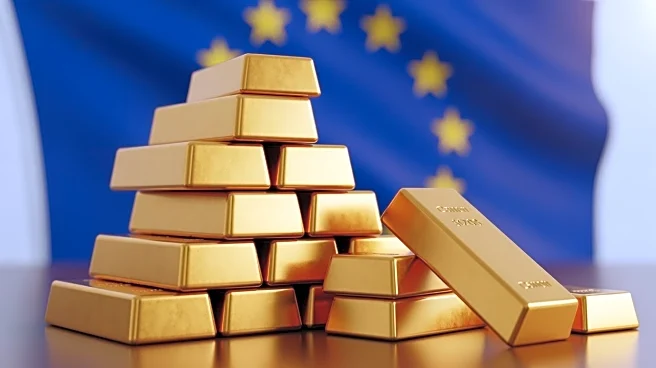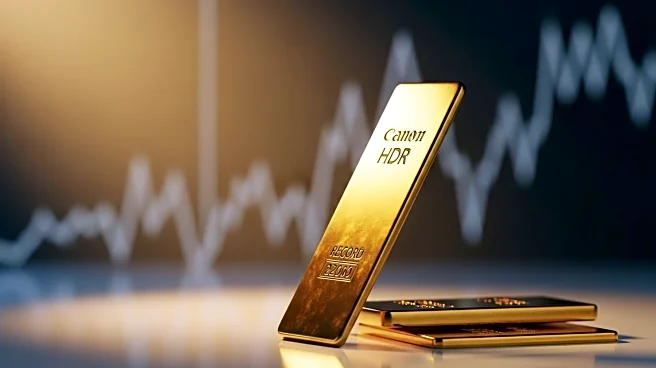What's Happening?
Gold prices have reached a historic high of $4,000 an ounce, marking the best year for gold since 1979. This surge is attributed to widespread geopolitical turmoil and a weakening U.S. dollar. The increase
in gold prices is seen as a recession indicator, historically correlated with inflation and geopolitical instability. The current gold boom began in 2022 following Russia's invasion of Ukraine, which led to Western sanctions on the Russian central bank. These sanctions highlighted the importance of owning assets that cannot be easily frozen, prompting central banks, especially in emerging markets, to increase their gold reserves. Additionally, concerns over the U.S. dollar's value erosion due to rising national debt and Federal Reserve policies have driven investors to shift towards gold and other independent assets.
Why It's Important?
The surge in gold prices reflects broader economic and geopolitical uncertainties. As the U.S. dollar weakens, investors are seeking safer assets like gold, which is not subject to government control. This trend indicates a lack of confidence in contemporary monetary policies and the Federal Reserve's ability to maintain the dollar's strength. The shift towards gold also underscores the impact of geopolitical events, such as the Russia-Ukraine conflict, on global financial strategies. Countries with emerging markets are particularly affected, as they seek to protect themselves from potential shocks caused by U.S. policies. The rise in gold prices could influence investment strategies, with some investors opting for traditional safe-haven assets over modern technological innovations.
What's Next?
The ongoing geopolitical tensions and economic uncertainties suggest that gold prices may continue to rise. Investors will likely monitor the Federal Reserve's actions and U.S. monetary policies closely, as these factors will influence the dollar's strength and, consequently, gold's appeal as a safe-haven asset. Central banks in emerging markets may continue to increase their gold reserves to safeguard against future economic shocks. Additionally, the bifurcated market, where both gold and stocks are rising, indicates differing investor perspectives, with optimists favoring equities and pessimists choosing gold. This dynamic may persist as long as uncertainties remain in the global economy.
Beyond the Headlines
The current gold rush highlights deeper concerns about the stability of global financial systems and the reliability of traditional monetary policies. The skepticism towards the Federal Reserve and the U.S. dollar reflects broader doubts about institutional governance and economic management. This situation may lead to increased interest in alternative assets like cryptocurrencies, which share some characteristics with gold as independent and decentralized investments. The cultural and historical significance of gold as a safe-haven asset also underscores a return to traditional values in times of uncertainty.












